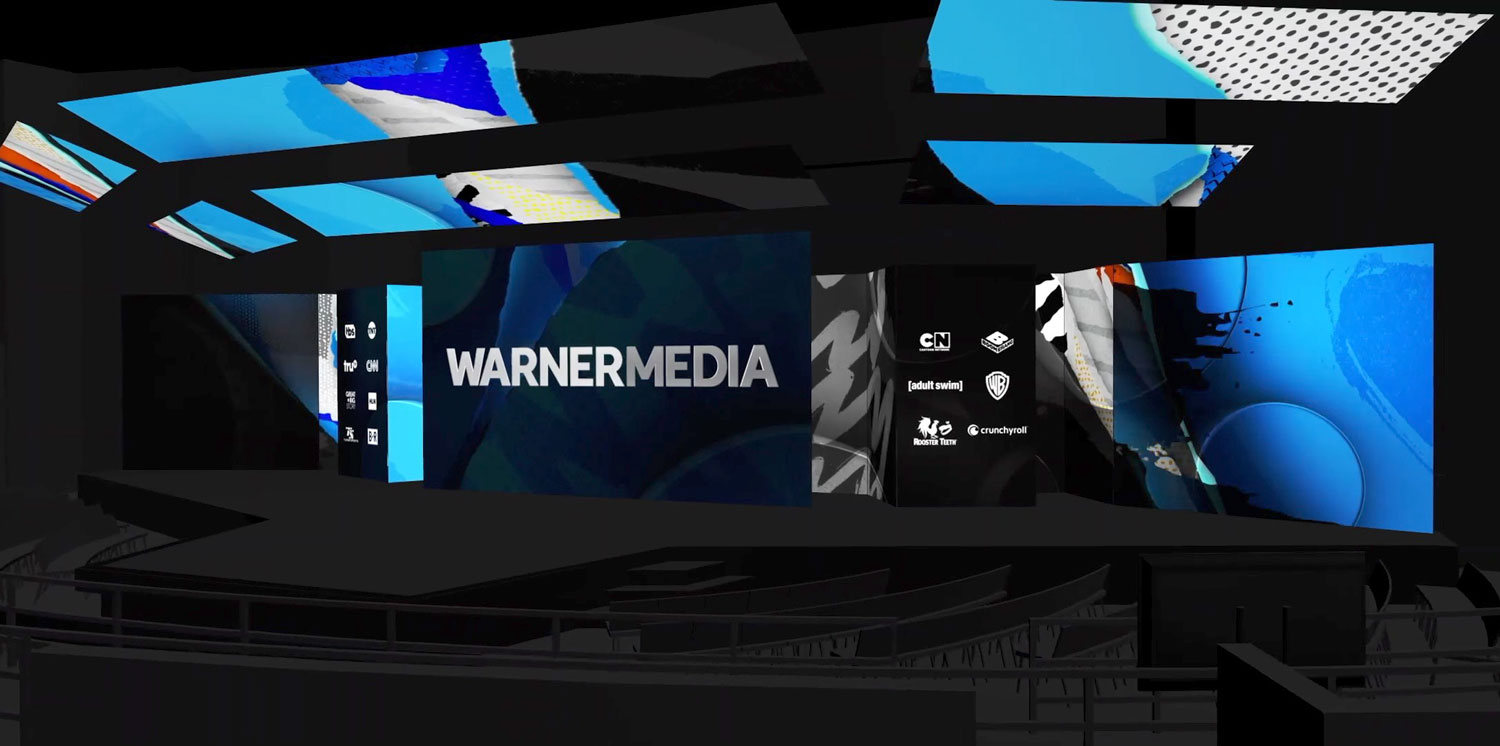
4 Tips to Help Your Presentation Take Flight

Written by James Grosch
In school, most kids would grumble when the teacher would assign a presentation. While the rest of the kids were groaning, I was secretly so excited. Was it because I was a nerd? Yes. But also, I love presentations. It was a chance to put on a mini-show for the rest of my classmates. I would try to make my presentations as entertaining as possible, while still packing in enough educational content to get a good grade on the assignment.
While I still love presentations to this day, I can understand why many people don’t. Public speaking can be intimidating. All eyes are on you, and a lot can be riding on your presentation. Whether it’s pitching a client, debuting a new product, or unveiling a lineup of network programming, the future of your business could be at stake.
Plus, most presentations are just plain boring.
We’ve all been there. When we hear the word presentation, many of us think about overstuffed Power Point slides and some executive droning in a monotone voice. Most presentations are terribly dull and disrupt our work days.
But they don’t have to be.
In this article, I’m going to share with you four presentation principles to help you take your presentation to the next level. Follow these guidelines, and not only will you avoid being boring, but you’ll create engaging presentations crafted to effectively get your point across.
1) Consider your audience first

The most important aspect of your presentation isn’t your slide deck. Or even you.
It’s your audience.
After all, they are what will decide if your presentation is a hit or a flop. If you are pitching something, they are the decision makers who can give your project a green light. If you are selling something, they could be your future customers. If you are teaching something, they are people who can implement your lessons and make an impact on the world.
But most importantly, they are the people who are giving you their time and attention. These are two of the most precious resources any of us have.
So present with empathy.
Empathy has been a guiding principle for Elevation. It’s why we started the Designed with LOVE project, and it’s how we try to conduct every aspect of our creative projects. We’ve found that when you approach a project with empathy first, it yields better results and stronger relationships. This definitely applies to presentations.
Elevation Executive Producer Steph Carson recommends being flexible and accommodating when presenting to a potential client, even if that means adjusting your presentation.
“When presenting to a small group or single decision maker, I always begin a presentation by asking how they would prefer I proceed. Despite all the work that goes into preparing a well-crafted presentation, a person may love it or hate it simply because of how their day is going. You may have the most beautiful, perfectly organized presentation laid out, but if the person on the receiving end is exhausted, swamped or simply has a short attention span, they will not only not enjoy your presentation, in fact, they may subconsciously assign some negative feelings towards you for things completely out of your control. When that happens, no amount of gorgeous layouts can help you. I usually address this right away with something like, 'I have a full presentation prepared that I’d love to walk you through. How much time do you have and is there anything you’d specifically like me to focus on?' Starting off this way sets a tone of empathy and consideration, and it can mentally put a pair of rose-colored glasses on any presentation.”
Elevation Director of Marketing Brittany Massingill’s favorite presentation tip is to provide examples that the viewer can picture themselves in.
“Make the content of your presentation directly relatable back to their personal lives. Your audience is looking to get some sort of value out of your presentation, whether that’s learning about a new product or finding a solution to a problem they have. Even if it’s a stretch, finding a way to work your presentation back to what hits home with your target audience always helps your message resonate.”
2) Tell a compelling story with your presentation
Stories are our most effective form of communication. People are hardwired to retain information if they’ve consumed it in story form. I’ve previously written on how storytelling is a fantastic tool for advertisers, and the same principles apply here.
Structure your presentation like a story, with a beginning, middle, and end. When you watch a movie or episode of television, the first few minutes are built to grab your attention and draw you in. Your presentation should start the same way. Rather than giving a brief summary of everything you’re about to tell your audience, here are two ideas to draw them in:
- Share a brief personal anecdote related to your presentation’s subject. Don’t spend too much time off topic, but this is a good way to get people invested in what you’re talking about.
- Create a sense of mystery. Pose a question at the top of your presentation, and then spend the rest of the presentation answering it. It’s the same basic structure of a whodunnit show. A mystery is presented in the first 5 minutes, and you watch the show for the rest of the hour to see who committed the crime.
The middle of your presentation is the meat of what you’re presenting. All of your major ideas or announcements belong here.
Endings are also vitally important, and often overlooked. If a movie has a great first two acts but has a terrible ending, it leaves audiences with a bad taste in their mouths. Don’t just fizzle out or stop your presentation abruptly. Make sure your presentation ends strong. It’s a good idea to recap your major points, but also tie in something from your introduction. If you started with an anecdote at the beginning, give an epilogue or coda to that story that ties everything together. This will give a satisfying bookend and make your presentation more memorable.
Also focus on your delivery. Utilize storytelling techniques during your presentation like timing, suspense, and humor. Any presenter can benefit by working on their presentation style. My big piece of advice is to watch great presenters on YouTube and notice their pace and their presence.
One of the all time great presenters was Steve Jobs. His debut of the iPhone in 2007 still stands as one of the most iconic and effective presentations ever given because he presented it like a storyteller.
His introduction of the iPhone combines great storytelling techniques: timing, suspense, humor, and mystery. He could have come out and just said “Today, we’re going to introduce the iPhone, which is a touchscreen iPod, a phone, and an internet communicator.” But that wouldn’t have been as memorable. By including his “it’s the same device” twist, Jobs presented that information like a showman. This introduction is genius because it provides a surprise, and it structures the rest of his presentation into organized sections.
3) Make your presentation look great
Design can make or break a presentation. You could be the most polished speaker in the world, but if your presentation looks bad, you’ll look bad too. A poorly designed deck will make you look unprofessional and distract your audience.
So whether your presentation is minimal or intricate, it needs to look good.
Here are a few quick tips on how to create a well designed presentation:
Keep your branding consistent: Make sure your presentation is in line with your internal brand kit and guidelines. If you don’t have presentation guidelines within your kit, create a template to make sure that your presentation stays consistent across the board.
Consider colors carefully: Elevation Artistic Director and all-around design guru, Dianne Frisbee shares this tip on choosing colors for your presentation.
“Think through color choices. Be consistent with the connections people might draw from the color choices. Think about how and when to use your brand colors. Do your research so that you are not using competitor’s colors that could have your audience making unconscious connections by mistake.”
How many fonts to use: Don’t go crazy on fonts! As with everything, it’s most important to be consistent. One to two fonts is a good rule of thumb. Pick a font for your headers and a font for your body text, and make sure they look good together. You could get away with a third font for special uses, like quotes or product highlights. However, less is more when it comes to fonts.
Incorporate Multimedia: Keep your audience’s attention by incorporating pictures, video, and audio into your presentation.
Design to your canvas: How will your audience be receiving your presentation? Will it be on a massive stage with many large format screens? Or will you be presenting via Zoom, where someone could be watching on a small window on their laptop? As you design your presentation, keep this in mind to best optimize the content you create. Lots of small text won't work well on a small screen.
How much text to put on each slide: Speaking of quantity of text, your presentation document should be able to stand on its own, without a speaker. You don't want 100% of what you are going to say to be put on every slide, but you should include enough of the important points that someone will understand what you're trying to say even if they only receive the slide deck. Dianne emphasizes, "A good presentation document should be able to stand alone to tell/sell an idea and not require a salesperson, but only be enhanced with a guide."
Find the right design tools and resources: If you are designing your own presentation or have a small team, free tools like Canva for design or Pexels for stock photography can be amazing resources to help give your presentations a good level of polish.
Work with a designer: If you need to work with a team of expert designers and producers on a presentation, get in touch with us. Our team has a ton of experience prepping professional presentations for events, conferences, and upfronts.
4) Do a full rehearsal

Don’t just run through the presentation in your head. Do a full rehearsal that recreates the conditions of the presentation as much as possible. That means doing it out loud to an audience, if you can find one. Your coworkers can be good team players here and give feedback, but kids and pets will do if you're desperate.
When I say full rehearsal, I mean full rehearsal. The more complicated your presentation is, the more chances there are for things to go wrong. Make sure you have the right multimedia loaded up, that your slides are in the correct order, and that your audio and video are working correctly.
If you're giving a stage presentation, this means a technical dress rehearsal. But if you're presenting digitally, something I like to do is to do a Zoom call with myself, even before I work with other teammates. I'll just call my phone from my laptop. This way I can see how everything will look and sound to whoever else is on the call.
Make your presentations take flight
Present with empathy. Structure your message like a storyteller. Design like an artist. Rehearse like you're on Broadway. These are four keys to taking your presentation from another item on someone's calendar to an event worth remembering.
Need help taking your presentation to the next level? Get in touch! We'd love to help.
Topics: event creative development
